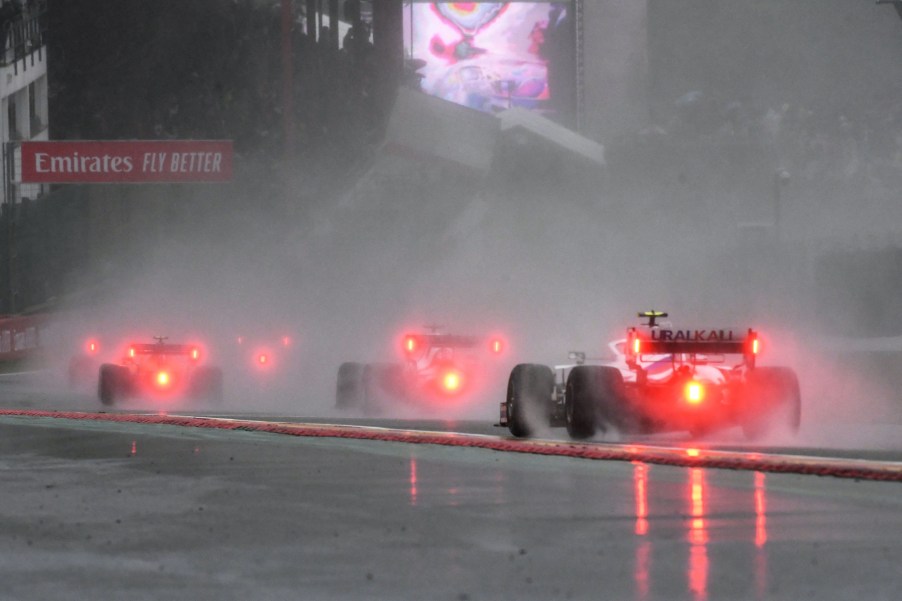
F1: Do Formula 1 Cars Drive in the Rain?
The Formula 1 Belgian Grand Prix at Spa-Francorchamps over the weekend did not exactly go as planned. The weather was quite rainy all week leading up to the race, but it really started to pour on race day. When it comes to Formula 1 cars, can these race cars drive in the rain well enough to finish an F1 race?
Does Formula 1 race in the rain?

Formula 1 vehicles can ultimately drive in the rain, but racing is a different story. The F1 cars have multiple sets of tires: soft, medium, hard and wet tires. According to Pirelli, there are two wet tire options. These are the Cinturato Green intermediate and Cinturato Blue full wet tires.
Pirelli calls the Cinturato Green intermediate wet tires. Pirelli notes that these are more versatile wet tires. “They can be used on a wet track with no standing water, as well as a drying surface. This tire evacuates 30 liters of water per second per tire at 300kph.”
The Cinturato Blue full wet tires are better for heavy rain. These are equipped to evacuate 85 liters of water per second. Pirelli said that “when it rains heavily, visibility rather than grip causes issues.” Such a situation is exactly what happened at the Belgian Grand Prix.
F1 results 2021: Formula 1 Belgian Grand Prix
Equipped with Pirelli tires, the Formula 1 cars were able to drive in the rain. The issue that prevented an entire race was visibility. Like driving behind a large truck on the highway, rain droplets and traffic cause a loss of visibility. Max Verstappen could see around the safety car because the safety car was only giving off a small amount of spray. Any driver behind Verstappen likely couldn’t see anything.
In the Formula 1 post-race press conference, Paul Di Resta interviewed Verstappen, George Russell, and Lewis Hamilton. Resta asked Verstapped what his biggest concern was during the race, specifically if visibility posed a thread.
“I guess that was the biggest problem. I mean the grip was low, we know that, in the wet. We don’t have a lot of grip with these tyres but when you can’t see where you are going or you don’t know where the car ahead of you is, that’s never really nice, so you can’t properly race like that.”
Max Verstappen | Formula 1
Trying to conduct a race with poor visibility, low tire grip, and a wet track doesn’t make sense. It is unsafe for the drivers and those working at the track to do so.
The rain won this round, along with Max Verstappen
With the rain cutting the race short, this was the shortest F1 race in history, surpassing Australia in 1991. In addition, it was only the sixth time The FIA gave a race half points since 1975. The cars could get on the track for two laps behind the safety car before the race was finally suspended.
In conclusion, Formula 1 cars can drive in the rain, but racing in the rain is a different story. The situation has no presented itself very frequently either. FIA Race Director Michael Masi said, “obviously from the FIA perspective and jointly with Formula 1, safety is paramount for drivers, the teams, and all of the spectators.” Safety first, racing second.



